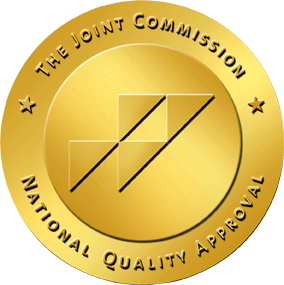Post-traumatic stress disorder (PTSD) is a mental health condition that develops in response to a traumatic event. PTSD can affect anyone, but women are more likely than men to develop this mental health disorder. The condition can affect veterans exposed to the stress of combat and those who have experienced physical or sexual assault. PTSD can be debilitating, but effective treatment is available.
What Is PTSD?
PTSD, or post-traumatic stress disorder, is a diagnosable mental health condition. It develops in people exposed to actual or threatened death or serious injury. For instance, being threatened with a weapon or enduring a physical assault can lead to PTSD symptoms.
A person can also develop PTSD after witnessing a traumatic event happen to someone else; for example, witnessing a friend or loved one being shot or killed can cause PTSD to develop. Sometimes, PTSD develops after a person hears about a traumatic or shocking event happening to a loved one.
Regardless of the specific cause, PTSD can greatly impair daily life. It can be difficult to maintain healthy relationships or be successful at work or school when coping with PTSD symptoms.

It's time to get your life back.
Whether you are struggling with addiction, mental health or both, our expert team is here to guide you every step of the way. Don’t wait— reach out today to take the first step toward taking control of your life.
[rehab-location-widget]
Recognizing PTSD Symptoms
PTSD comes with distinct symptoms divided into physical, emotional and behavioral signs.
Physical Symptoms of PTSD
PTSD can cause physical symptoms, including the following:
- Having difficulty falling asleep or staying asleep
- Elevated heart rate and blood pressure
- Feeling fatigued
- Joint and back pain
- Headaches
- Tight muscles
- Nausea
These symptoms alone do not always indicate PTSD, but in someone with a history of trauma, physical side effects can occur in response to reminders of the traumatic event or because of the stress related to unresolved trauma.
Emotional Symptoms of PTSD
PTSD is also associated with a range of emotional reactions, some directly related to the diagnostic criteria for the disorder. These include:
- Extreme distress when exposed to reminders of the traumatic event
- Negative beliefs, such as the belief that the world is all bad
- Constant presence of negative emotions, such as anger, guilt or shame
- Difficulty experiencing positive emotions like happiness or satisfaction
- Outbursts of anger with little provocation
Behavioral Symptoms of PTSD
PTSD is also associated with distinct behaviors, which can include:
- Avoiding reminders of the traumatic event
- Having a hard time concentrating
- Showing signs of flashbacks to the traumatic event
- Detaching from other people
- Displaying little to no interest in hobbies and other enjoyable activities
- Engaging in reckless behavior, such as substance abuse
- Startling easily
- Being constantly on the lookout for signs of danger
Types of PTSD
Sometimes, people refer to different types of PTSD because multiple mental health conditions fall under the same category as PTSD. In the Diagnostic and Statistical Manual of Mental Disorders, PTSD and related conditions are classified as trauma and stressor-related disorders.
In addition to PTSD, the following conditions are included under this classification:
- Acute Stress Disorder: Acute stress disorder is similar to PTSD, but symptoms are shorter in duration. To be diagnosed with acute distress disorder, a person needs to have experienced a traumatic event and experience symptoms related to acute stress that lasts three days to one month. In contrast, PTSD symptoms must last for more than a month.
- Prolonged Grief Disorder: Prolonged grief disorder is diagnosed when people experience extreme longing for someone who has died and are preoccupied with the person’s death. Prolonged grief disorder is more disabling than typical grief. It persists for at least a year following the death of a loved one (or six months for children and teens), resulting in intense emotional pain and other symptoms that interfere with daily functioning.
- Adjustment Disorder: An adjustment disorder is a clinically significant reaction to a stressful life event. For an adjustment disorder diagnosis, the person’s reaction to the stressful event must be out of proportion to the actual severity of the event. It must also cause great impairment in daily life.
- Complex PTSD: In addition to these official diagnoses associated with PTSD, some people may refer to a specific type of PTSD called complex PTSD. While not an official diagnosis, complex PTSD refers to presentations in which a person experiences additional symptoms beyond the usual PTSD criteria after exposure to prolonged trauma. Those with complex PTSD experience difficulty with emotional regulation and a sense of hopelessness, suicidal thoughts and chaotic relationships.
- Co-occurring PTSD: In some cases, PTSD may occur alongside another diagnosis, such as depression or a substance use disorder. In this case, a person is said to have co-occurring disorders.
Causes of PTSD
To be diagnosed with PTSD, a person must directly experience a traumatic event, witness another person exposed to such an event or hear about such an event happening to a loved one. Some events that can cause PTSD include:
- Suffering from a sexual assault
- Being physically attacked
- Being threatened with a weapon
- Experiencing a serious automobile accident
- Watching a loved one die in an automobile accident
- Learning of a loved one being violently attacked or killed
- Experiencing a near-death encounter in war or watching fellow soldiers be seriously injured or killed
- Repeatedly witnessing human suffering in the line of duty, such as seeing people severely injured working as a paramedic.
Diagnosing PTSD
If you think you may have PTSD, it’s important to reach out to a professional for diagnosis and treatment. A physician with experience in treating mental health disorders can diagnose conditions like PTSD; doctors not as experienced in treating mental health disorders can refer you to a mental health professional, like a psychologist or clinical social worker, who can make a diagnosis.
The professional making a diagnosis will gather information about your health history, family situation and current symptoms to determine if you meet the criteria for PTSD, as outlined in the Diagnostic and Statistical Manual of Mental Disorders. The professional may use symptom checklists or assessment tools, such as questionnaires or surveys, to clarify which symptoms you’re experiencing and whether they meet the diagnostic criteria for PTSD. The person making the diagnosis will likely ask for some details about the traumatic event(s) you have experienced and how it has affected your daily life.
PTSD Statistics in the U.S.
PTSD statistics provide information about how common this disorder is in the U.S. According to available data, the following is true of PTSD:
- Between 6%–9% of people experience PTSD during their lifetimes.
- Within a given year, about 3.5% of people experience PTSD.
- Studies have shown that over 90% of people with PTSD experience at least one other mental health disorder at some point.
- In some populations, such as those exposed to combat, the rates of PTSD are as high as 40%.
Risk Factors for PTSD
Not everyone who experiences a traumatic event will develop PTSD. Certain factors increase the risk of developing PTSD after trauma exposure. These include:
- Exposure to severe trauma
- Being female
- Being a younger adult
- Adverse childhood experiences
- Having a chronic medical condition
- Being diagnosed with another psychiatric disorder
- Exposure to reminders of the traumatic event
- Being exposed to trauma that is violent or longer in duration
Effective PTSD Treatment Options
PTSD can cause symptoms that interfere significantly with daily life, but the condition is treatable. It is often treated with psychotherapy, medication or a combination. One therapeutic modality commonly used in the treatment of PTSD is exposure therapy, which helps someone recover by gradually exposing them to reminders of the trauma.
People may also benefit from cognitive therapies, which can help them reprocess the trauma and think about it differently. For example, if they blame themselves for the traumatic event or view the world as unsafe, a therapist can help them restructure these negative thinking patterns.
Certain SSRIs (selective serotonin reuptake inhibitors) are FDA-approved for treating PTSD. These medications are considered antidepressants, but they can also be beneficial for treating PTSD symptoms, such as negative emotions and anger. A doctor can help you decide if medications are an appropriate treatment option.
Coping Strategies for PTSD
In addition to professional treatment, self-help strategies can help you cope with PTSD. Some helpful strategies include:
- Seeking social support: Talking with understanding friends and family members when you’re having difficulty coping can be beneficial. It’s also helpful to consider attending a support group where you can learn from others experiencing the same challenges.
- Relaxation techniques: Relaxation techniques like yoga, meditation and deep breathing can be beneficial. These techniques can calm your body so the physiological symptoms of PTSD are not as severe.
- Practice self-care: When you have PTSD symptoms, self-care strategies, such as making time for rest, regularly exercising and eating nutritious foods, will help you manage your stress and maintain your health.
Seeking Professional Help for PTSD
If you’ve experienced a traumatic event and are living with symptoms that interfere with daily life, a professional can help. Reaching out to a local mental health clinic for an assessment is the first step in healing.
For those in the Missouri area, The Recovery Village Kansas City has a full range of treatment services, including medical detox, residential treatment, partial hospitalization programming, intensive outpatient services and aftercare. We can treat PTSD and co-occurring substance use disorders in our different treatment programs.
Contact one of our Recovery Advocates today to get started.











